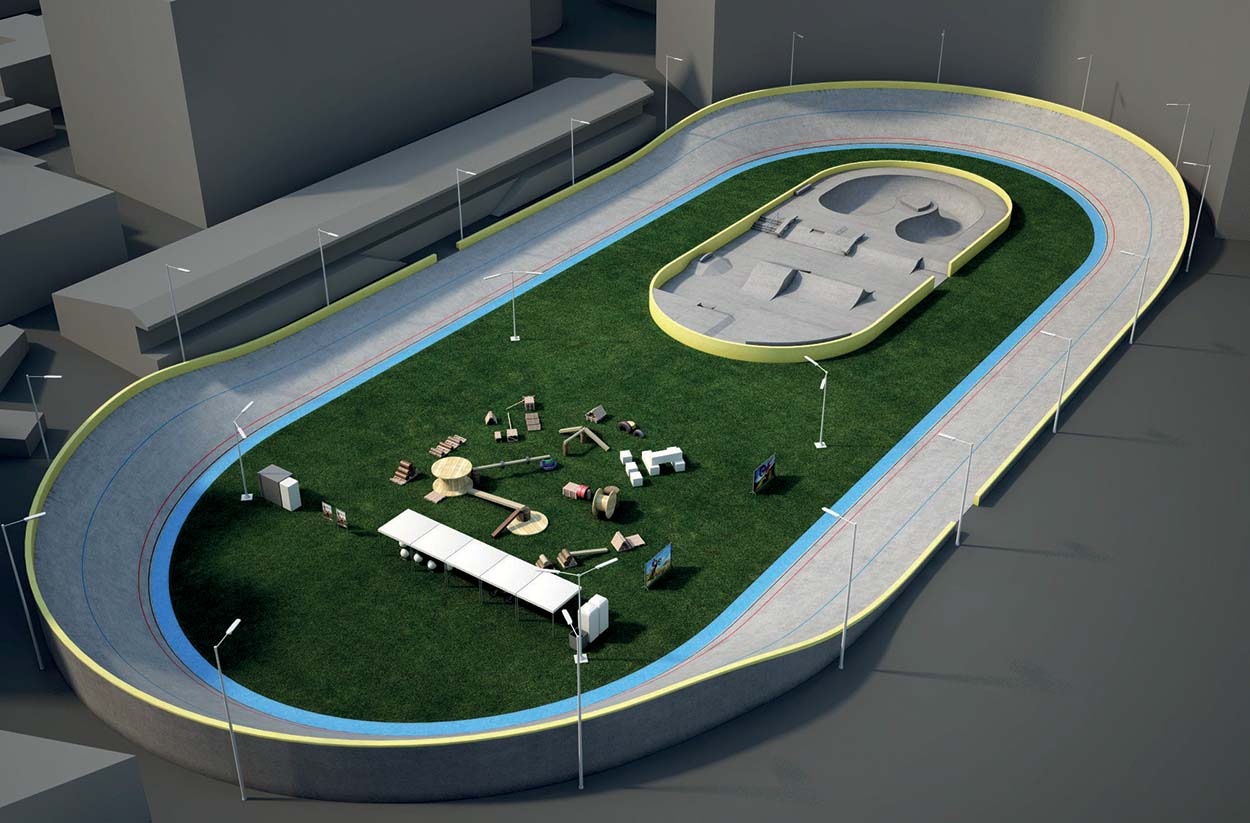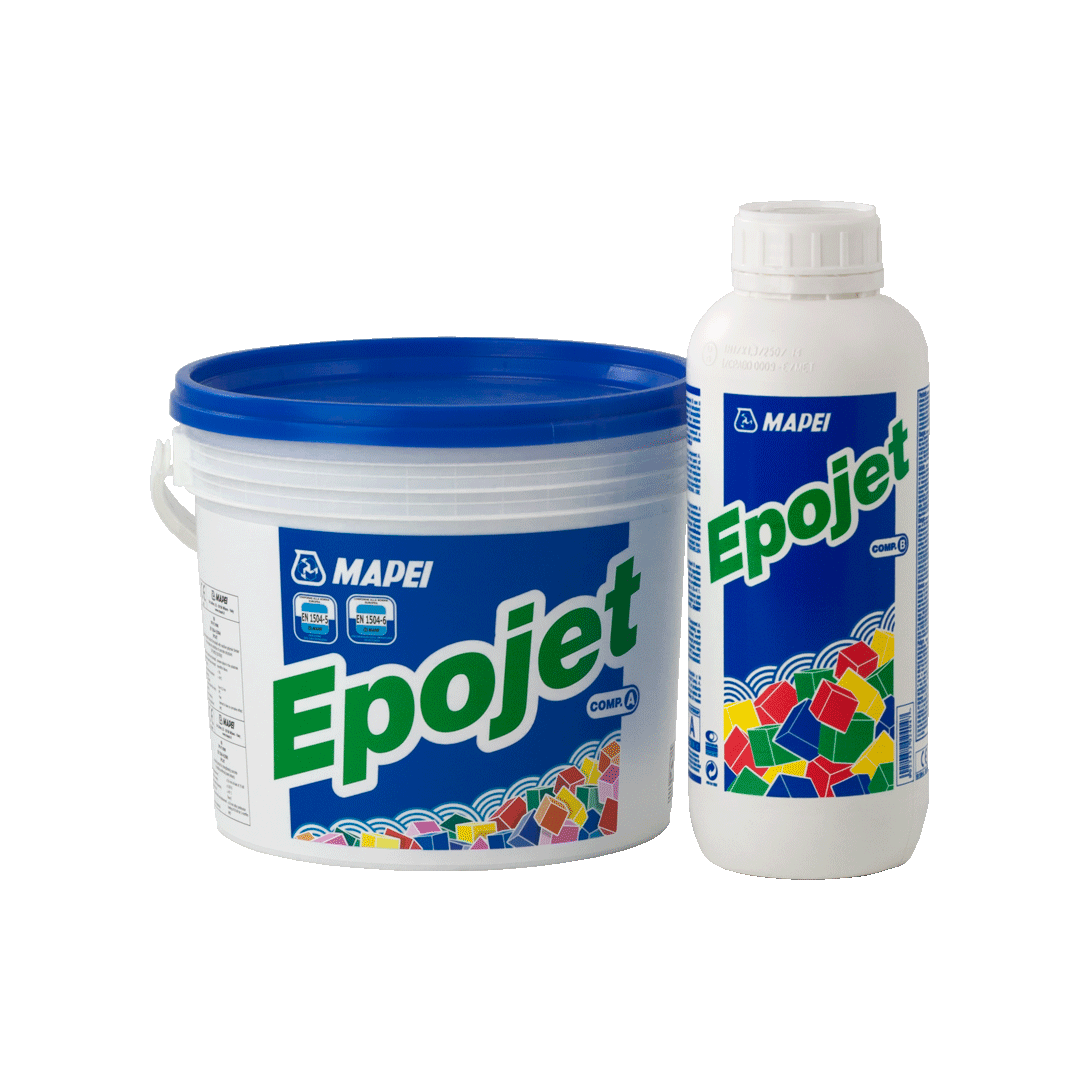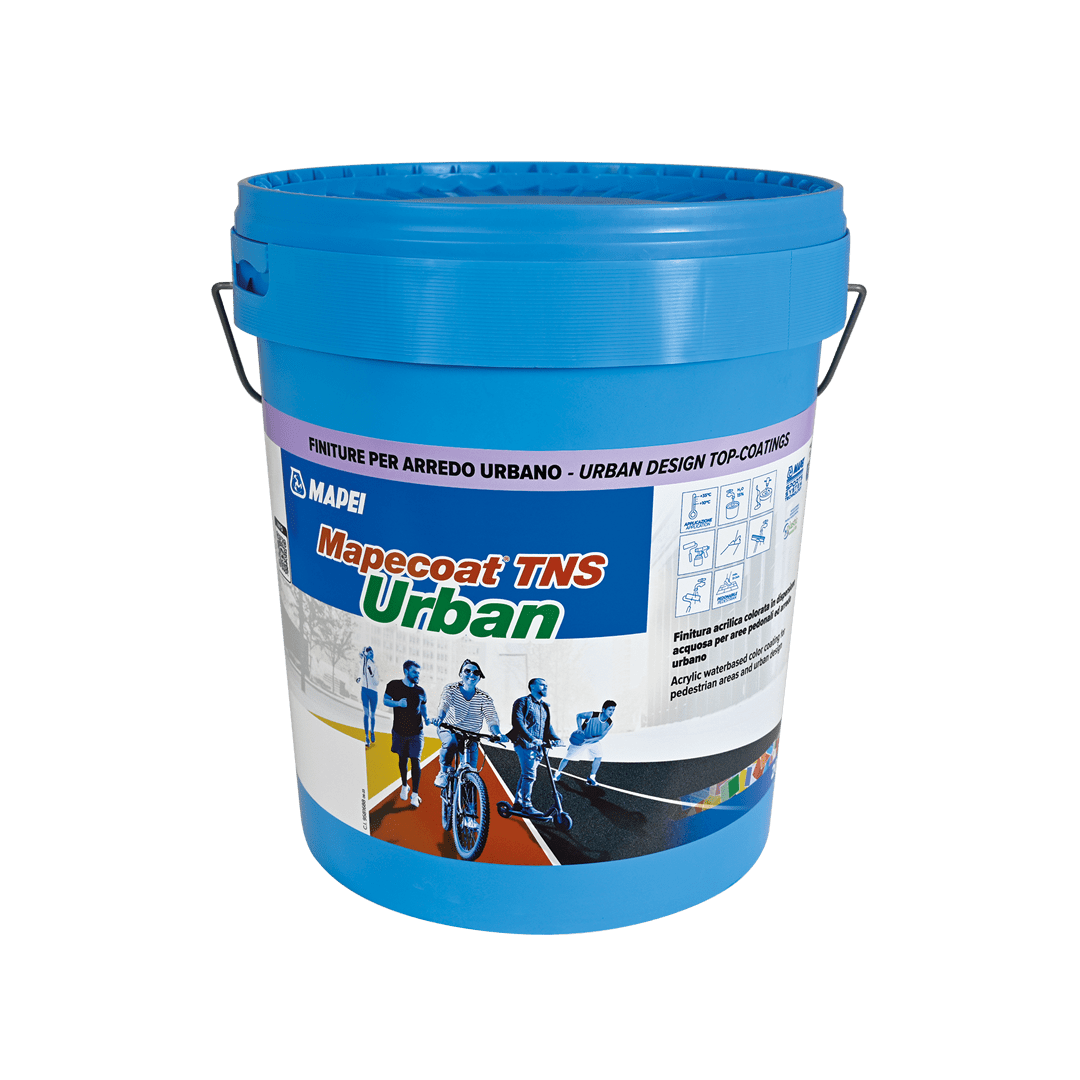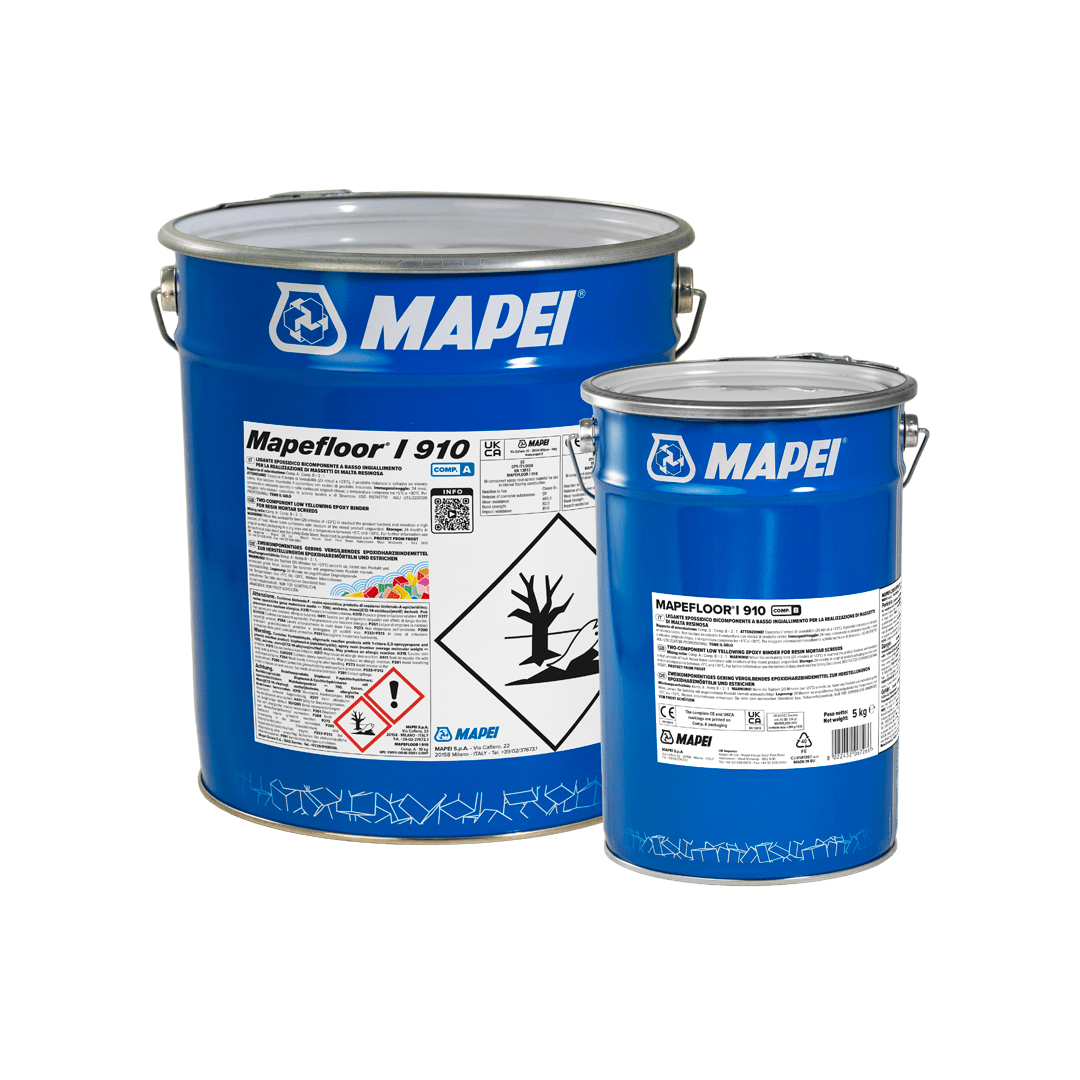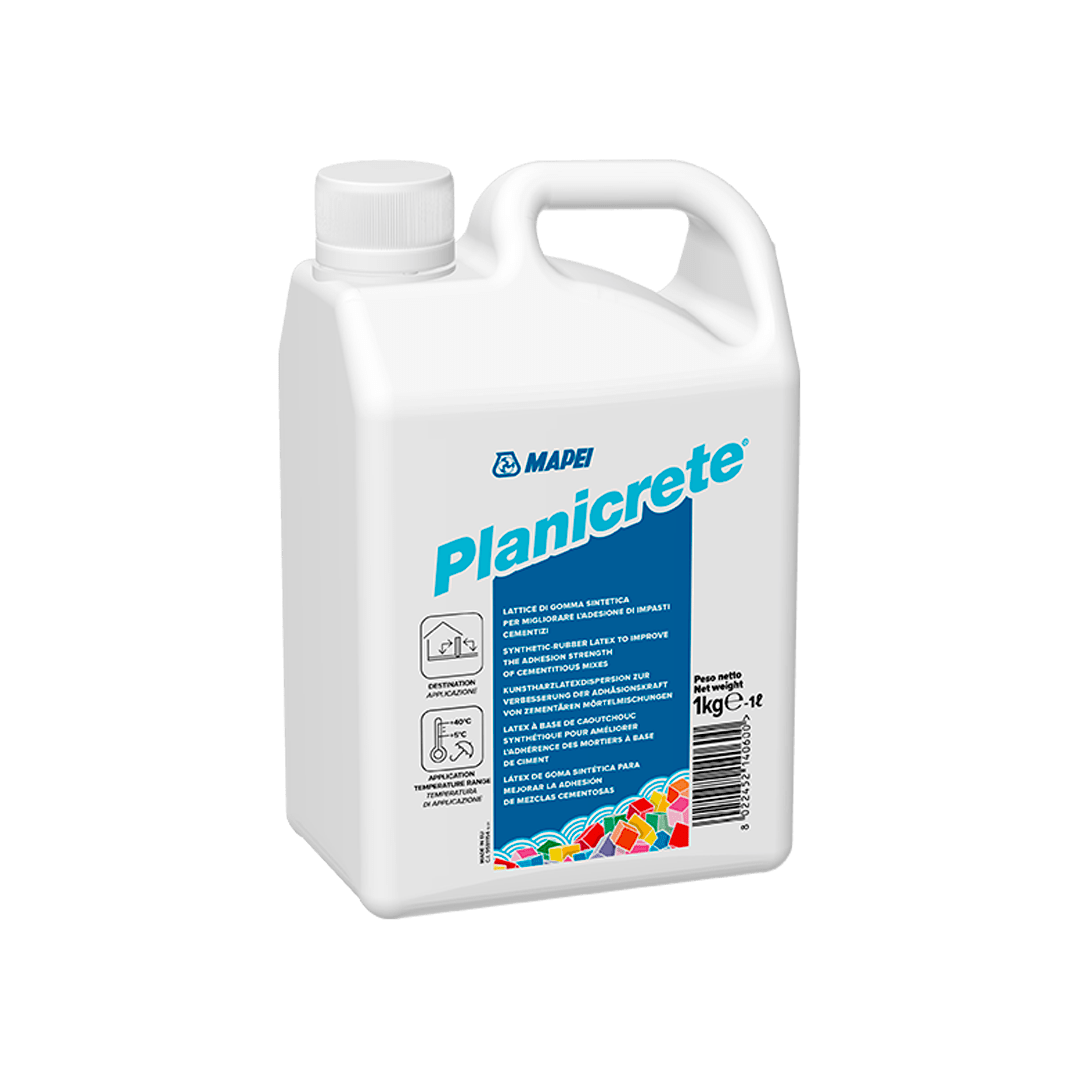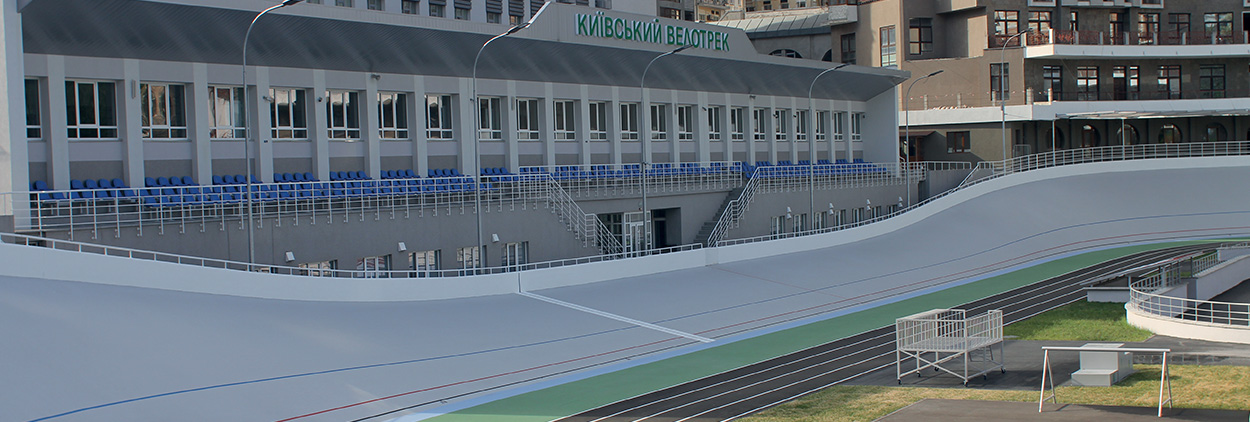
Kiev Velodrome
An historical track cycling track has been “saved” and restored to its former use.
Kiev's historical cycling track has been "saved" by a group of citizens who prevented it from being demolished despite the poor condition of the track and the new plans of the city. Mapei products have been specifically asked by the association to give the cycling track a new life with the TNS System and with the specific products for resins and concrete repair.
“On my honour I am here to ask the Governorate Directors for the permission to build a velodrome and a wooden pavilion on the site of manor house No. 58 in Funducleevska Road.” This was how Ivan Belenco presented his request to build a velodrome in 1912 to the Kiev authorities. The racing track was inaugurated one year later on the occasion of the 300th anniversary of the Romanov royal family. Following the October Revolution in 1917, the history of Russia took a different direction, but in the new Soviet Union the velodrome continued to be used for cycle races. The track was restored and redeveloped for the first time in 1939 and, apart from modernising the existing structures, a central entrance was added and a barrier wall was built around the track. The effects of time, general neglect and new norms and standards meant the circuit had to have a general overhaul between the 1970’s and 1980’s and, apart from repairs to the various structures, the track itself also needed to be rebuilt. In 2007, plans were presented to build a new block of apartments right next to the perimeter of the velodrome and there was even mention of demolishing the velodrome itself, which now lay in a general state of disrepair. To prevent this historical circuit being demolished and losing it forever, a group of citizens founded an association for Cycling Fans of Kiev. The association monitored all of the renovation phases, helping choose the bests solutions and best products for the velodrome.”
RESTORATION PROJECT
The structure of the track. The track is 286 metres long, 8 metres wide around the bends with a slope of 38°, an angle across the straights of 11°, the transition curve is 21.5 metres long and the constant radius around the bends is 21.7 metres, allowing cyclists to reach speeds of up to 73.58 km/hour. As far as its capacity is concerned, the Velodrome has a layout that can host 2,000 spectators.
The condition of the track. A first survey found the entire circuit was in poor condition and, apart from having cracks and areas that had become detached, the surface of the track was covered in vegetation.
Restoration of the track. After a further series of surveys and a thorough analysis of the general condition of the materials by the designers and contractors contacted to carry out the restoration work, in the spring of 2015 the first phase of the work was carried out to remove all the vegetation and rubbish on and around the track. The following spring the actual restoration and upgrading work started. The company contracted to carry out the various interventions contacted Mapei Technical Services who, after surveying the site and realising the extent of the damage, recommended a series of products suitable for the needs of the site. Firstly, and after removing all the vegetation and damaged areas from the surface, the cracks in the substrates had to be sealed and, to carry out this part of the work, it was recommended to use EPORIP two-component, solvent-free epoxy adhesive. Once it had been applied, the surface of the adhesive was broadcast with quartz sand while it was still fresh. The cracks were also reinforced and consolidated by injecting them with EPOJET super-plastic epoxy resin.
The surface of the concrete wall around the track was levelled with NIVOPLAN PLUS levelling mortar (produced by Mapei Polska Sp.z o.o. and distributed on the Ukrainian market by Mapei Ukraine Llc). This cementitious skimming compound may be used to level uneven surfaces and brick and concrete walls. To improve its adherence to the substrate, it was mixed with PLANICRETE synthetic latex rubber. Once the substrate was perfectly dry, the damaged concrete was repaired with MAPEFLOOR I 910 two-component epoxy binder, which acts as a bonding promoter for resin coatings or can be used to make trowel-finish mortar mixed with quartz sand, as in this case.
Application of the MAPECOAT TNS URBAN system. At the end of April, after completing the repair and restoration work on the substrate, a series of tests were carried out with different products to coat the surface of the track. The final choice was MAPECOAT TNS URBAN SYSTEM, a multi-layered system created specifically for coating cycle lanes, pedestrian areas and street furniture. Apart from coating surfaces, it also protects asphalt and cementitious substrates against general wear and tear and forms a non-slip finish resistant to oil, fuel and de-icing salts. Coatings made from this system have a very attractive finish and can be renewed easily and quickly. The system is made up of MAPECOAT TNS LINE, MAPECOAT TNS PROTECTION, MAPECOAT TNS URBAN and MAPECOAT TNS WHITE BASE COAT.
In this particular case MAPECOAT TNS URBAN was used for the track in the Kiev Velodrome, a coloured coating system made from acrylic resin in water dispersion and selected fillers. A first coat of white was initially applied, with a second coat after 12 to 24 hours, followed by three more coats, in this case in the final colour of light grey. At the base of the actual track the same coating system was used to create two strips of different widths in green and blue. When the substrate was perfectly dry, lines were painted on to mark out the track using MAPECOAT TNS LINE acrylic resin-based paint in water dispersion, in the colours cyan blue, red and black. The last step was to apply a protective coat of MAPECOAT TNS PROTECTION.
The Velodrome was inaugurated on the 20th of May 2017 by the Mayor of Kiev Vitali Klitschko, former heavyweight boxer and WBC “Champion Emeritus”. During the inauguration ceremony, the Mayor said: “We can remember the condition of the velodrome back in the spring of 2014 and only a few of us really believed it could have been revived. However, we managed to completely restore it and today we can finally celebrate our velodrome’s new lease of life!”.
Mapei rejoices in contributing to this heartfelt project!





